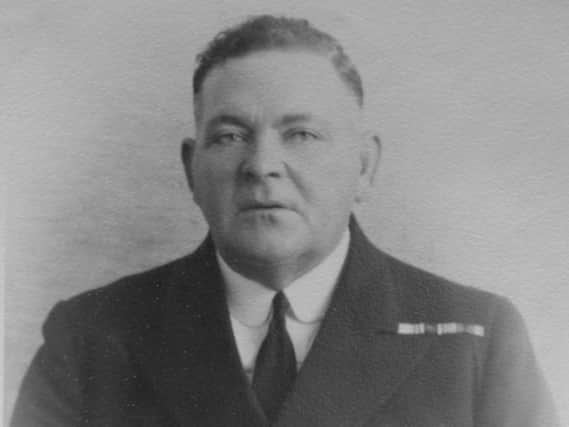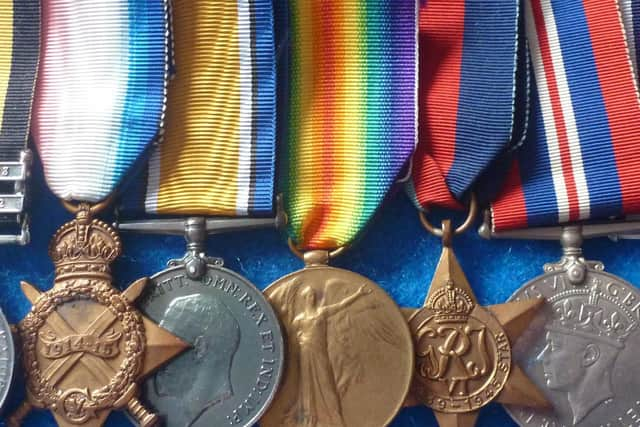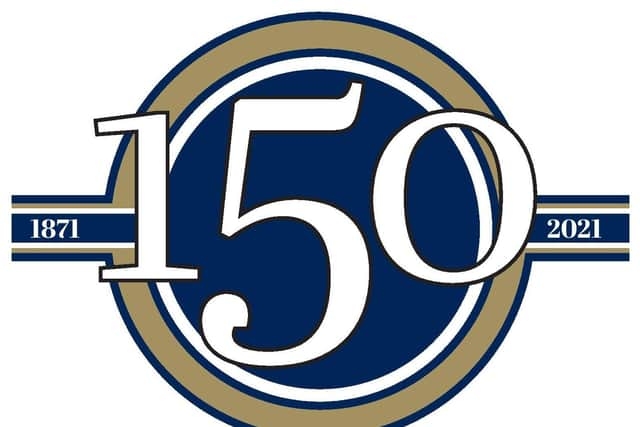HMS Chorley: Three men lost their lives when the ship sank on its way to Dartmouth in World War Two


As the Chorley Guardian reflects on the 150 years since it first published, we're telling the stories of people from our community who have touched peoples' lives in our Chorley 150 series.
We continue to look back with local historian Stuart Clewlow.
Advertisement
Hide AdAdvertisement
Hide AdDuring World War Two there was the Chorley & District sponsored Spitfire, HMS Ursula - the submarine sponsored by the borough, and there was even a ship with the name HMS Chorley.


The story began when I was fortunate enough to acquire an interesting group of medals to a sailor who had joined the Royal Navy in 1906 and saw service during the two world wars.
John Henry Downing was born in Holberton, Devon in February 1887.
He saw action off the coast of Africa and throughout World War One.
Advertisement
Hide AdAdvertisement
Hide AdIt seems he was a career sailor, earning the Long Service & Good Conduct medal before the start of World War Two, at which point he was transferred to serve on board HMS Chorley.


The 284 ton trawler was built by Smith’s Dock Co Ltd in Middlesbrough and launched on 12th May 1914.
The construction was completed by the end of June and the 128.8ft vessel was registered at Fleetwood with the name Ceresia.
In November 1914, Ceresia was requisitioned by the Admiralty for war service and was fitted with a 12-pounder cannon and a howitzer.
Advertisement
Hide AdAdvertisement
Hide AdThe boat which had a top speed of 10.5 knots was engaged on minesweeping operations around the British coastlines and it seems it made it through the war unscathed.


Although it is known that one sailor, 43 year old William Knights from Norfolk, died on board the trawler in April 1918.
After the war, when the vessel was surplus to Admiralty requirement, it was returned to its original owner in Fleetwood and in September 1921, for reasons unknown, it was renamed Chorley.
During the inter-war years, the trawler operated off Northern Ireland, the Irish Sea and around the Hebrides.
Advertisement
Hide AdAdvertisement
Hide AdIn January 1940, the boat was requisitioned by the Admiralty again and served as a Boom Gate Vessel from Plymouth.
One of the main duties of the boat was to lay steel anti-torpedo or anti-submarine nets around ships at anchor or harbours.
Although this sounds a safe role HMS Chorley was still at risk because during the early years of the war, the south was receiving regular and consistent bombardment from the German Luftwaffe.
In fact during one particular raid on Plymouth, HMS Chorley received considerable damage.
On 25th April 1942, HMS Chorley sailed for Dartmouth.
Advertisement
Hide AdAdvertisement
Hide AdIt is believed that it was heading there to receive a refit.
However, after only a couple of hours at sea the vessel started to take in water through the skylights and deck seams.
The crew began baling out water but it is assumed that it caused little concern because it wasn’t until a further six hours or so before the Skipper ordered a reduction in speed of the boat.
The water levels continued to increase until the balance was tipped and water began pouring in through the main hatch.
Advertisement
Hide AdAdvertisement
Hide AdWithin another hour, the vessel listed to port and began going down at the head.
It foundered off Start Point and 3 of the 23 crew drowned.
The three men who lost their lives when HMS Chorley sank were: Skipper Albert J. Beckett, Petty Officer Stoker William S. Dalton and 55 year old, World War One veteran Chief Stoker John H. Downing.
The skipper's body was never found but Downing and Dalton were recovered and buried at Venton chapelyard in Devon.
Chorley 150 countdown
This story is part of our Chorley 150 series to mark the 150th anniversary of the Chorley Guardian.
If you'd like to suggest a story for this Chorley 150 series then email [email protected]
Comment Guidelines
National World encourages reader discussion on our stories. User feedback, insights and back-and-forth exchanges add a rich layer of context to reporting. Please review our Community Guidelines before commenting.
